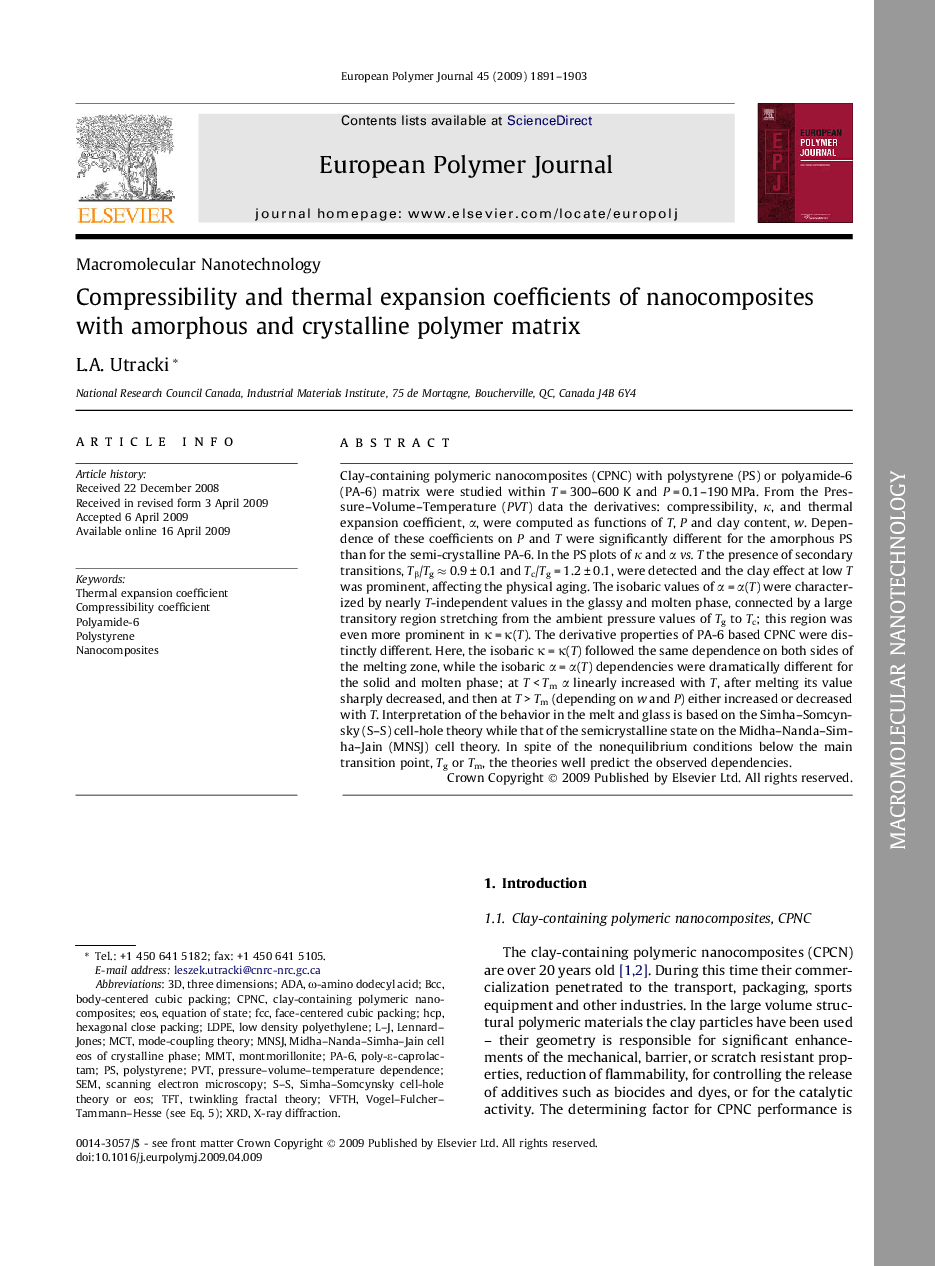| Article ID | Journal | Published Year | Pages | File Type |
|---|---|---|---|---|
| 1402734 | European Polymer Journal | 2009 | 13 Pages |
Clay-containing polymeric nanocomposites (CPNC) with polystyrene (PS) or polyamide-6 (PA-6) matrix were studied within T = 300–600 K and P = 0.1–190 MPa. From the Pressure–Volume–Temperature (PVT) data the derivatives: compressibility, κ, and thermal expansion coefficient, α, were computed as functions of T, P and clay content, w. Dependence of these coefficients on P and T were significantly different for the amorphous PS than for the semi-crystalline PA-6. In the PS plots of κ and αvs.T the presence of secondary transitions, Tβ/Tg ≈ 0.9 ± 0.1 and Tc/Tg = 1.2 ± 0.1, were detected and the clay effect at low T was prominent, affecting the physical aging. The isobaric values of α = α(T) were characterized by nearly T-independent values in the glassy and molten phase, connected by a large transitory region stretching from the ambient pressure values of Tg to Tc; this region was even more prominent in κ = κ(T). The derivative properties of PA-6 based CPNC were distinctly different. Here, the isobaric κ = κ(T) followed the same dependence on both sides of the melting zone, while the isobaric α = α(T) dependencies were dramatically different for the solid and molten phase; at T < Tmα linearly increased with T, after melting its value sharply decreased, and then at T > Tm (depending on w and P) either increased or decreased with T. Interpretation of the behavior in the melt and glass is based on the Simha–Somcynsky (S–S) cell-hole theory while that of the semicrystalline state on the Midha–Nanda–Simha–Jain (MNSJ) cell theory. In spite of the nonequilibrium conditions below the main transition point, Tg or Tm, the theories well predict the observed dependencies.
